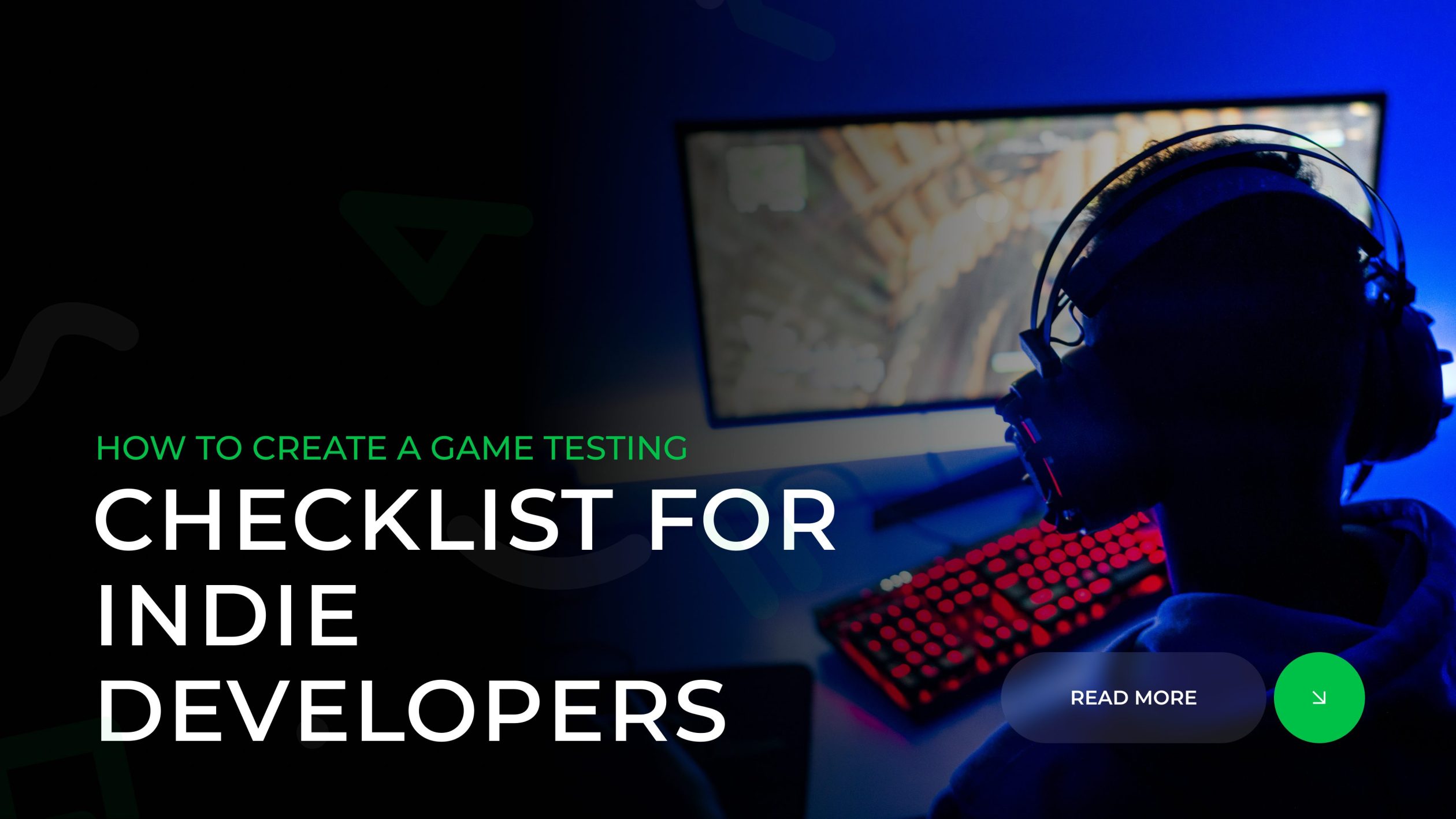When you’re an indie developer working with limited time and budget, having a structured QA process can make or break your game. A well-designed checklist helps you catch issues before they reach players — saving both reputation and revenue. And if you’ve ever worked with professional game testing services, you already know how a systematic approach to QA can prevent chaos and missed deadlines.
In this article, we’ll break down the essential steps of building a practical game testing checklist, explain why it’s vital for indie projects, and share a ready-to-use example you can adapt for your own game.
Why a Checklist Matters More Than You Think
For many indie studios, testing happens “when there’s time.” That’s risky. Without a proper checklist, bugs slip through, key features go untested, and regressions appear right before launch. A structured checklist keeps testing consistent, transparent, and traceable — even if you’re a one-person team.
Here’s what it does for you:
- Consistency: ensures you always test the same areas, no matter how many updates you release.
- Awareness: highlights what’s been covered and what hasn’t.
- Transparency: if you work with others, everyone understands what’s already tested.
- Error prevention: reduces “we forgot to check that” moments.
In short, a game testing checklist keeps your QA process organized — something crucial when you’re juggling multiple roles as an indie developer.
Checklist Structure: Core Categories
Below is a simple yet effective checklist structure you can follow. Not every section applies to every game, but it gives you a clear foundation to build upon.
| Category | What to Test |
|---|---|
| 1. Setup / Environment | Installation, startup, settings |
| 2. Functional Testing | Core gameplay, interactions, features |
| 3. UX / UI | Navigation, accessibility, ease of use |
| 4. Graphics / Audio / VFX | Rendering, textures, sound sync |
| 5. Performance / Stability | FPS, crashes, memory leaks |
| 6. Localization / Text | Translations, fonts, text clipping |
| 7. Compatibility | Platforms, screen resolutions, hardware |
| 8. Regression Testing | Re-testing after bug fixes |
| 9. Release Readiness | Compliance with store/platform rules |
Key Points to Include in Each Section
1. Setup / Environment
- Verify clean installation and uninstallation (no leftover files).
- Test startup across different system configurations.
- Check graphics and audio settings at all quality levels.
- Ensure save folders and configs are correctly created.
2. Functional Testing
- Test all player actions: movement, interaction, combat, inventory, etc.
- Validate object collisions — no clipping through walls or terrain.
- Check transitions between levels or zones.
- Confirm that saving/loading works properly.
- Test edge cases — can the player “break” the game by doing unexpected things?
3. UX / UI
- Verify menus, navigation, and button highlights.
- Test responsiveness across resolutions and aspect ratios.
- Make sure tooltips and prompts are intuitive.
- Confirm that error messages appear when needed.
- Ensure that keyboard/controller navigation is smooth.
4. Graphics / Audio / Visuals
- Check textures for blurriness or missing assets.
- Validate animations for smoothness and proper transitions.
- Review lighting, shadows, and particle effects.
- Ensure sound effects are synchronized with gameplay.
- Test music loops, volume sliders, and muting behavior.
5. Performance / Stability
- Measure FPS under different settings and scenes.
- Watch for performance drops during heavy action.
- Run stress tests for extended play sessions.
- Monitor memory usage — watch for leaks or spikes.
- Check how the game recovers from crashes or network interruptions.
6. Localization / Text
- Confirm that all strings are translated and display properly.
- Ensure text fits within UI elements (no clipping or overflow).
- Check font readability and style consistency.
- Verify punctuation, grammar, and special characters.
- Test language switching without restarts or crashes.
7. Compatibility
- Test across different OS versions, drivers, and GPUs.
- Try various resolutions and full-screen/windowed modes.
- For mobile: check on multiple devices and OS versions.
- Validate controller support (Xbox, PlayStation, generic).
- Ensure consistent performance on both high-end and low-end hardware.
8. Regression Testing
- After each fix, verify that the bug is gone — and hasn’t caused new ones.
- Re-test all nearby systems or features related to the fix.
- Keep regression testing iterative — don’t wait until the end.
9. Release Readiness
- Confirm compliance with platform requirements (Steam, Play Store, etc.).
- Validate packaging — no debug files or leftover content.
- Double-check version numbering and changelog accuracy.
- Make sure no critical or blocking bugs remain.
- Prepare the submission documentation and assets (icons, screenshots, trailers).
How to Build a Useful Checklist (That You’ll Actually Use)
Even the best checklist won’t help if it’s too complex or outdated. Here are some tips to make yours functional and sustainable:
- Modular structure — Split the checklist into manageable sections (functional, graphics, performance, etc.).
- Customize it — Delete items irrelevant to your game’s genre and platform.
- Start small, then expand — Begin with a simple version and improve it over time.
- Prioritize — Use tags like “Critical,” “Major,” or “Minor” to sort tasks by importance.
- Track progress — Add columns for “Pass,” “Fail,” “Not Tested,” and “Blocked.”
- Link to bug reports — Each failed check should reference its bug ID for easy tracking.
- Keep it updated — Whenever new features are added, add new tests too.
Sample Indie Game Testing Checklist Template
Here’s a simplified template you can copy into Google Sheets, Excel, or Jira:
Each item can have columns like:
- Result: Pass / Fail / N/A
- Comment: Notes or bug references
- Build version: To know when it was tested
Practical Tips for Indie Teams
- Start testing early. Don’t wait until “the game is almost done.” Testing during prototyping helps you catch design flaws early.
- Bring in external testers. Fresh eyes will find issues you’ve become blind to.
- Automate what you can. Use scripts to benchmark FPS or memory automatically.
- Test incrementally. Don’t batch changes — fix and verify in small steps.
- Document everything. Keep records of what was tested, when, and by whom.
- Perform regression testing regularly. Fixes can easily introduce new bugs.
- Stay realistic. You don’t need AAA-level QA; focus on core gameplay stability and user experience first.
Final Thoughts
A well-built game testing checklist is one of the most powerful tools an indie developer can have. It keeps your QA process disciplined, repeatable, and transparent — without requiring a big studio budget.
Start with a simple template, expand it as your project evolves, and update it after every milestone. Whether you’re doing everything yourself or working with external QA partners, a clear checklist ensures your game is tested efficiently and consistently.
And if you’d like to go one step further — you can download a ready-to-use indie game testing checklist template or collaborate with professionals to optimize your QA workflow.












